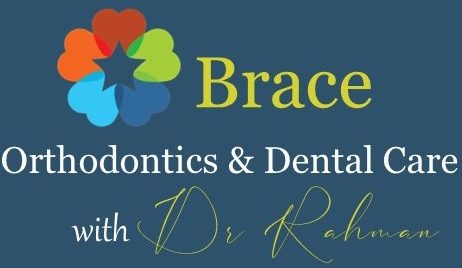
Maintaining a regular routine of dental care involves essential practices like brushing and flossing your teeth. These practices play an equally crucial role in maintaining your oral health and overall well-being, according to healthcare professionals. It is strongly advised by doctors to incorporate these two dental care practices into your daily routine.
The American Dental Association (ADA) recommends brushing your teeth for a minimum of two minutes, twice a day. Additionally, it suggests flossing between your teeth at least once daily. However, if you feel that there are food particles stuck between your teeth, you can also floss at other times.
The Importance of Brushing Your Teeth
The most effective way to take care of your teeth is by brushing them regularly. Brushing removes food particles, discoloration, and plaque (a sticky film of tiny food particles mixed with bacteria) from your mouth.
The presence of plaque and bacteria in the mouth poses the greatest threat to oral health. High sugar intake activates the bacteria in the mouth, leading them to produce acids that can weaken tooth enamel. This can result in various dental and oral issues:
- Formation of Dental Cavity: The damage caused by plaque, bacteria, and germs to your tooth results in tooth cavity, creating small holes that lead to tooth decay. In the early stages, you may not notice any symptoms of tooth cavity, but later, you might experience toothache, infection, and loose teeth. Regular visits to a McKinney dentist are essential to determine if you have a cavity in your teeth. When a tooth cavity develops, it can be quite painful and may result in other general health issues. Receiving treatment for a tooth cavity can be an unpleasant experience, so preventing tooth cavities from forming in your mouth is essential. Consistently brushing your teeth effectively plays a crucial role in prevention.
- Formation of Tartar:Plaque on teeth can lead to the formation of tartar, a tough deposit of calcified material that develops on the gums and teeth. This makes it more challenging to maintain oral hygiene as it cannot be easily removed. Tartar affects the look of your teeth, smile, and facial expressions and can also contribute to various dental and oral issues, including gum disease and inflammation.
- Mouth Infection:When plaque remains in your mouth for an extended period, it can lead to mouth infections. Common symptoms of mouth infections include bad breath, toothache, fever, sore mouth, bitter taste, gum inflammation, and swollen jaw. Plaque can also cause tooth loss, abscessed tooth, and periodontal diseases. Therefore, it is crucial to eliminate plaque by brushing your teeth twice daily. Dentists recommend using fluoride toothpaste and a soft-bristled toothbrush for effective cleaning and freshening of your mouth.
The Importance of Dental Flossing
Flossing your teeth is an important part of maintaining good oral health as it helps to eliminate small food particles that get stuck between your teeth. Healthcare professionals recommend regular flossing in addition to brushing, but unfortunately, only a small number of individuals heed this advice.
Do you take flossing seriously, or are you one of those who overlook this important dental practice?
Incorporating flossing into your oral care routine is beneficial for preventing various dental and mouth-related issues. Consider the following mouth problems that may arise from food particles being lodged between your teeth.
Here are some mouth problems you may experience due to food particles that are stuck between your teeth. Check them out here:
1.Challenges with Chewing- Have you ever encountered difficulty chewing because of food particles stuck between your teeth? If so, you are well aware of how exasperating and bothersome it can be. It creates a sensation of intense pressure between the teeth. Once you experience this issue in your mouth, you cannot divert your attention from it, even if you try. While it may not be a serious dental issue, it can escalate if not addressed.
2.Stuck food particles lodged between your teeth can cause discomfort and disturbance, similar to a toothache. Using dental floss to remove these particles is essential to alleviate the discomfort and prevent further disturbance.
3. Larger food particles stuck between your teeth may lead to a bearable toothache, but it should not be left untreated.
4. Bleeding gums can result from the presence of stuck food particles between your teeth; however, this is not a common issue. It typically occurs when inappropriate techniques are used to remove the particles.
You can avoid all these mouth problems by flossing your teeth daily, especially after having your daily meal.
How to Floos Teeth?
Below are guidelines for correctly flossing your teeth.
- Start by a piece of dental floss, making sure it’s 18-24 inches long.
- Afterward, wrap most of the floss around your thumb and index finger, leaving 1-2 inches of floss to slide between your teeth. Then, grip the floss firmly and insert it between your teeth to eliminate any trapped food particles.
- Gently move the floss up and down, rubbing against the sides of each tooth. Avoid the gums as flossing too vigorously can cause irritation or injury.
- Repeat this process for each tooth to ensure thorough flossing.
You can also use a dental floss tool to floss your teeth.
Apart from this, an oral irrigator or water flosser is also effective in removing food particles stuck in your teeth. It is an at-home flossing device, also used for removing plaque formed around the gum line.
